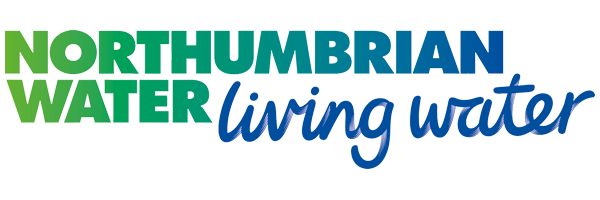Manganese North (2018)
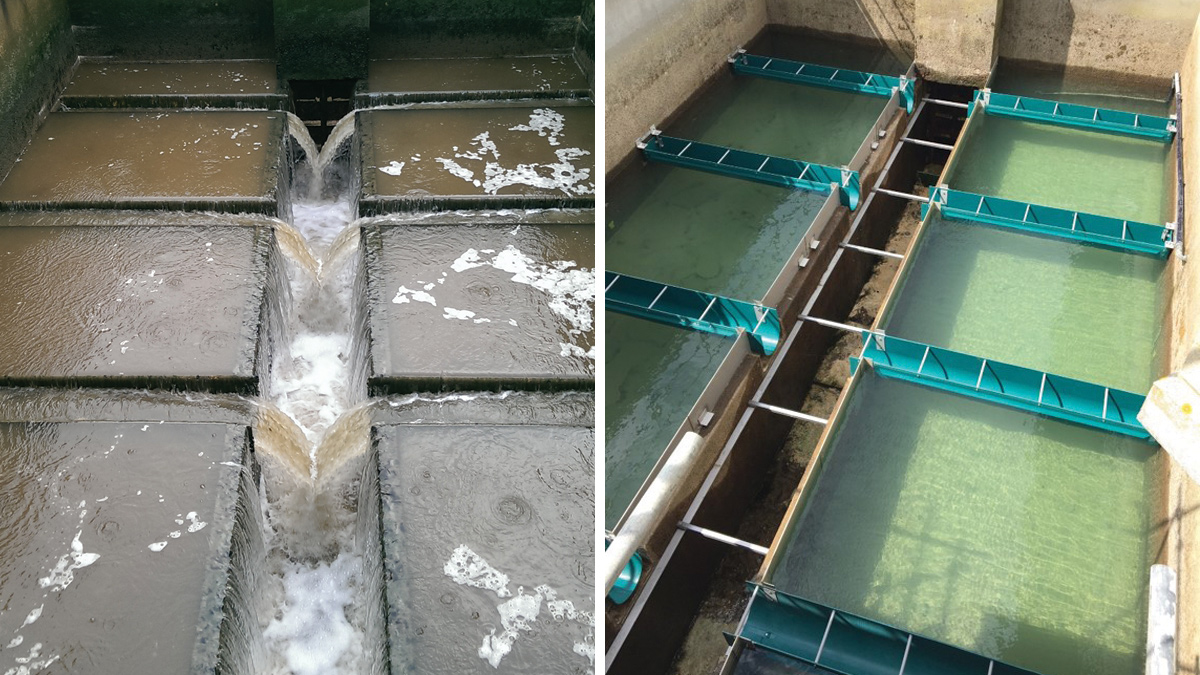
(left) Original RGF in backwash and (right) newly refurbished filter at Whittle Dene WTW - Courtesy of MMB
Between 2007 and 2014 two of Northumbrian Water’s (NWG) water supply zones, served by Whittle Dene WTW and Warkworth WTW, both in Northumberland, consistently received the highest number of water quality contacts for discoloured water. In previous AMP periods, NWG undertook a programme of strategic mains cleaning and unidirectional flushing to improve customer acceptability performance. However, follow-up investigations revealed that despite the cleaning programmes, manganese remained the primary cause of discoloured water and that biofilms, which allow reseeding with manganese and other particulates, began to reform in the cleaned pipework. If allowed to continue, this would lead to future customer contacts, so, following the source-to-tap approach, there was a need to effectively remove manganese at both treatment works.
Treated water discolouration
Discolouration in treated water is normally due to iron, aluminium, manganese and turbidity residuals from WTWs, and from the mobilisation of the products of pipework corrosion within the distribution network.
The raw water at both sites contains dissolved manganese, which is one of the most abundant metals in the earth’s crust, usually occurring with iron. Residual manganese was found to be the primary cause of discoloured water at the customer’s tap in both water supply zones. Manganese is a ‘coloniser’ attracting other particulate materials onto the pipe wall and, together with bacteria and organic compounds, forms a biofilm on the internal surfaces of the pipework. Changes in flow due to sudden increases in demand or bursts can dislodge the biofilm and result in discoloured water at the customer’s tap.
Manganese is a component of overall drinking water compliance and excess residual manganese can impact or be responsible for failures of asset health measures. It is also known that WTWs with aluminium sulphate as the coagulant are more susceptible to produce discoloured water than those with ferric based coagulants. Of the three water treatment works supplying Tyneside, Whittle Dene and Warkworth both use aluminium sulphate, whilst Horsley WTW uses part aluminium/part ferric-sulphate coagulant.
An internal target of less than 5ug/l manganese between rapid gravity filters and granular activated carbon would improve performance and water quality.
Undertakings
In 2016 NWG engaged Mott MacDonald Bentley (MMB) to implement an undertaking with the Drinking Water Inspectorate (DWI) to deliver a technical solution for the removal manganese at both works by September 2018. By reducing the concentration of manganese leaving the works to less than 5ug/l, the undertaking would achieve overall drinking water compliance (ODWC), reduce discoloured water customer contacts, improve measures of success and prevent reseeding of the network with manganese following the Acceptability of Water (AOW) mains cleaning projects already underway.
Manganese North: Table of designers, contractors and suppliers
- Client: Northumbrian Water
- Principal designer & contractor: Mott MacDonald Bentley
- Media replacement: Western Carbons Ltd
- M&E and chemical dosing: Sheers
- Systems integration: Peak 42
- Electrical subcontractor: Intelect
Whittle Dene and Warkworth WTWs
Whittle Dene WTW is 13 miles west of Newcastle with a deployable output of 118Mld, and supplies the baseload drinking water to 228,000 properties on Tyneside (Tyne Valley, Newcastle and Gateshead). These Tyneside regions have historically had the highest number of discoloured water contacts compared with other NWG supply zones.
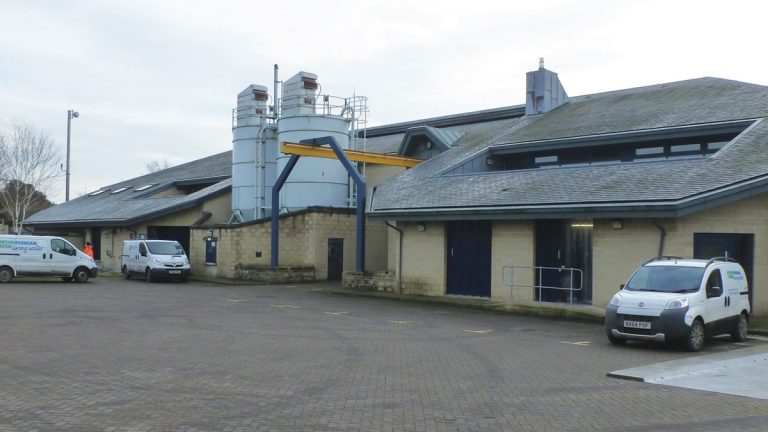
Whittle Dene WTW offices and lime silos – Courtesy of MMB
Whittle Dene WTW was constructed in 1992 and though generally achieving less than 5ug/l manganese, spikes over 10ug/l up to 45ug/l were occurring.
The treatment process comprises:
- Seasonal powdered activated carbon (PAC) dosing.
- Coagulation (by aluminium sulphate and polymer) and Clarification: 6 (No.) flat-bottomed clarifiers.
- Rapid gravity filtration: 11 (No.) RGFs.
- Final polishing by granular activated carbon (GAC) adsorption filters (for pesticide removal).
- Chlorine disinfection, fluoridation, pH correction and orthophosphoric acid dosing to control plumbosolvency.
- A contact tank is followed by an on-site treated water service reservoir storage prior to distribution.
Warkworth WTW is 31 miles north of Newcastle with a deployable output of 43Mld. It too is a strategically important works supplying 44,938 properties in Northumberland (including Alnwick, Bamburgh, Morpeth, Cramlington) and the Tyneside conurbation. The current works was constructed about 1960 and, again, though generally achieving 5ug/l manganese/l, spikes of between 10-45ug/l were not uncommon.
The treatment process comprises:
- Coagulation (by aluminium sulphate and polymer) and clarification: 4 (No.) flat-bottomed clarifiers.
- Rapid gravity filtration: 8 (No.) RGFs.
- Final polishing by granular activated carbon (GAC) adsorption filters (for pesticide removal).
- Chlorine gas disinfection, pH correction and orthophosphoric acid dosing to control plumbosolvency, and fluoridation.
Previous attempts to remove manganese, comprising the installation of manganese dioxide sand as the filter media in the RGFs, had not been successful: the media did not regenerate and quickly became ‘spent’, with out-of-specification grading, in very poor condition and media loss. In addition, the backwash regime did not entirely clean the filter media; the strength of backwash water delivery was insufficient to fully expand and fluidise the media bed for effective cleaning, and the backwash duration was not long enough to clear the dirty water from the bed.
The existing filter media was therefore ineffective at manganese removal and remained heavily loaded with particulate matter, resulting in reduced throughput and more frequent backwashing.
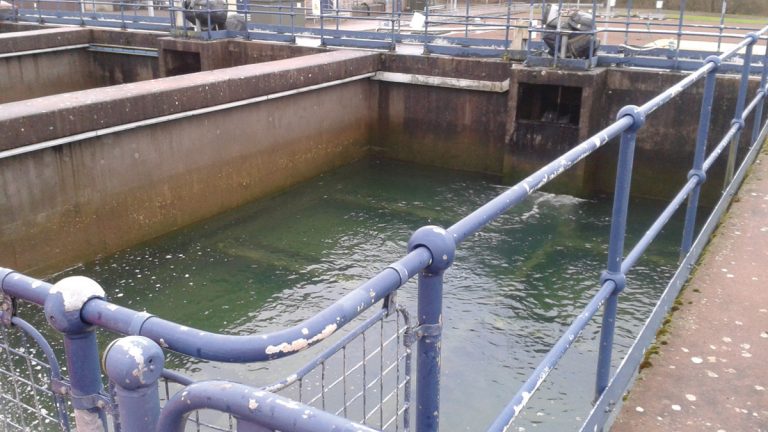
Original RGFs – Courtesy of MMB
NWG’s asset need statement
NWG’s asset planners investigated the issues at both sites and considered two potential solutions to reduce the concentration of manganese leaving the works from more than 10ug/l (post-RGF/pre-GAC) to below the service policy target residual of less than 5ug/l (before the GAC), set to minimise the accumulation of manganese in the distribution system:
- Adding a dedicated second stage of manganese removal filters, after the existing RGFs and before the existing GAC filters. This is a common arrangement for the removal of manganese but would have been an expensive TOTEX solution, involving interstage pumping and a new filtration plant.
- Installation of manganese dioxide (MnO2) media (polarite) within the existing RGFs, to replace the existing spent media, would provide a much cheaper single-stage removal option.
Dissolved manganese can be oxidised to a solid for removal by filtration by the polarite media acting as a catalyst for the oxidation process. For this to be a viable option the media itself needs to be continuously regenerated using an oxidant. Over several months NWG carried out an ‘under-the-microscope’ (UTM) study to identify the best oxidant and configuration to obtain the best results (pre-dosing potassium permanganate or chlorine before the RGFs, or chlorinating the backwash water or constant dosing).
The study confirmed that excellent manganese removal to less than 5ug/l could be achieved in a single-filtration stage in the RGFs by continual pre-dosing of the clarified feed water with chlorine to regenerate the manganese dioxide media. Hence this was confirmed as NWG’s notional solution.
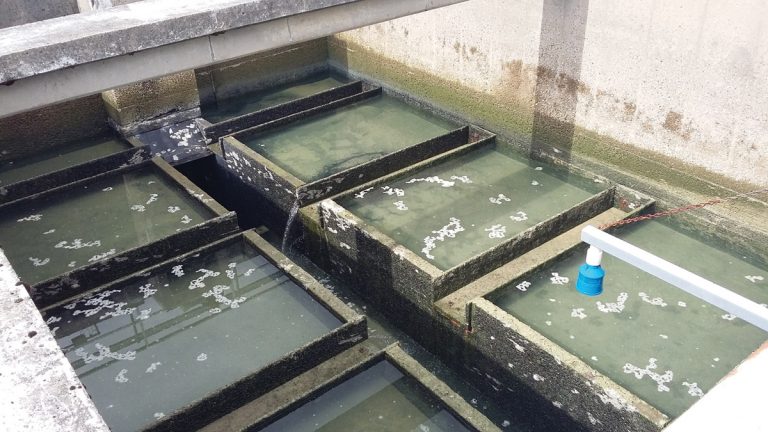
Original RGF weir walls and launders – Courtesy of MMB
Investigate and define (I&D)
In 2016 NWG commissioned framework contractor MMB to undertake an ‘investigate and define’ study. Within this initial design period MMB developed the notional solution for both sites. Removal of manganese was to be achieved by retaining the existing single-stage RGFs with new filter nozzles, replacement of existing media with new manganese dioxide (polarite) media and a layer of anthracite to re-settle the media after backwash.
At Whittle Dene larger backwash pumps were to be provided, with an increased filter wash duration and improved backwash water handling. New filter floor nozzles were to be installed at both sites and internal weirs and launder channels raised 300mm in height to allow the filter beds to fluidise during backwash cycles whilst preventing media loss.
New sodium hypochlorite plants were to be installed at both works to provide the necessary oxidation to ensure the continual regeneration of the polarite media. Due to the possible risk of trihalomethane (THM) formation from interaction between chlorine and organics (TOCs) during the warmer summer/autumn periods, new powdered activated carbon (PAC) plants were proposed at both sites to remove the organic precursors in the clarifiers.
In order not to adversely affect the performance of the aluminium sulphate dosed at the clarifiers, careful control of pH would be critical, so a new lime slurry plant was specified for Whittle Dene, whilst a new caustic plant was specified for Warkworth.
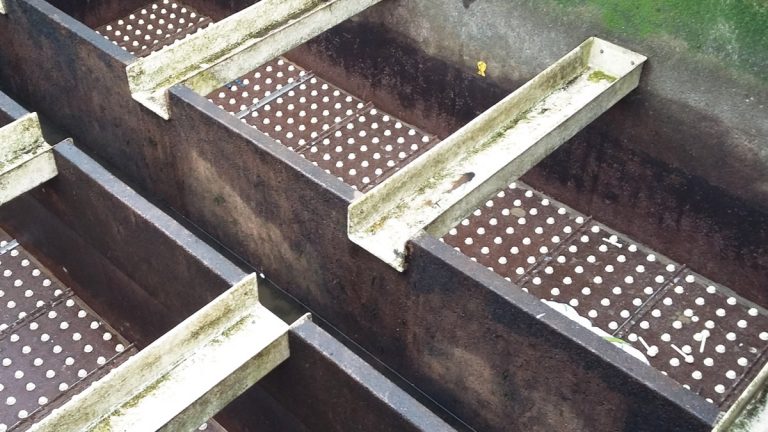
Original RGF before refurbishment – Courtesy of MMB
Design and construct (D&C)
Following agreement of a target cost in the I&D stage, NWG commissioned MMB to deliver the defined solution through a design and construction contract under Option C of the NEC contract. This commenced in October 2016 with a collaborative launch to engage all key stakeholders and the design team who were based on site from day one.
Construction works started in December 2016 with filter works at Whittle Dene including removal of the existing filter media and the existing 0.4mm aperture nozzles, and replacement with new 0.4mm nozzles, a 100mm layer of 20mm gravel, 900mm of 14/25 graded sand, 100mm of manganese dioxide filter media and 100mm of anthracite. New weir extension plates were installed along with new Leopold launders to inhibit media loss from the filters during backwashing.
There were several challenges initially, including fine materials which had entered the plenum chamber below the filter floor, completely blinding the distribution nozzles (originally specified as 0.3mm aperture to minimise media loss) during the first backwash operations and causing the filter floor to crack since there was no overload protection on the backwash pumps. This caused a 4-month delay to the project whilst an investigation and remedial works were completed.
The filter refurbishment work resumed in May 2017, since when work has progressed successfully at Whittle Dene. In this time both the sodium hypochlorite and the PAC plants were installed, commissioned and handed over at both sites, and at Whittle Dene a temporary lime dosing system (for uninterrupted pH control whilst the existing plant was stripped out and replaced) has now been decommissioned.
During commissioning of the refurbished filters at Whittle Dene, fines from the newly installed polarite media were causing unacceptable turbidity spikes. To deal with this, MMB installed a temporary ‘run-to-waste’ pumping station, with actuated valves on the existing filter scour lines, to divert the preliminary flow on commissioning, so avoiding the turbidity spikes in the pass-forward flow. This allowed the return to service of each filter to be managed more effectively, and maintain the momentum of the project.
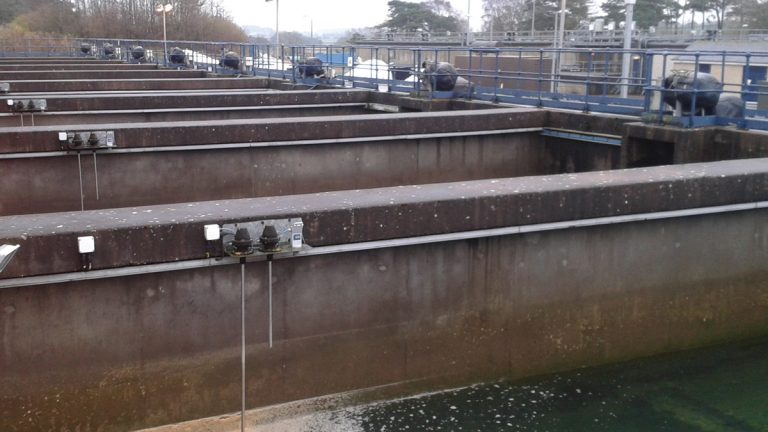
Original RGFs – Courtesy of MMB
The sodium hypochlorite oxidation plant was supplied as a pre-commissioned package plant to avoid the health and safety risk of using the originally specified chlorine gas system. OPEX costs are comparable whilst benefiting from a less hazardous chemical.
Construction at Warkworth was phased after Whittle Dene, to allow commonality of design and lessons learnt to be passed from one site to the other. The work at Whittle Dene is now nearing completion. Refurbishment of the filters at Warkworth commenced mid-2017 and will be complete by July 2018, whilst the caustic system was commissioned in March 2018.
Conclusions
The combined project value is £12.5m. By removing manganese at source, the project will improve overall drinking water quality, customer experience and reputation, reduce customer contact complaints due to discolouration, and remove the need and costs of future repeat cleaning of the distribution network following recent mains cleaning projects.
The filters at Warkworth are still undergoing refurbishment. The refurbished filters at Whittle Dene are now performing very well and are running for 48 hours on a timed basis between backwashes, compared to the previous arrangement which would run for a maximum of 8-24 hours.
NWG operators have praised the new lime dosing plant at Whittle Dene as being more controllable and the PAC plants at both sites as being much better to operate and maintain than the original plant.


